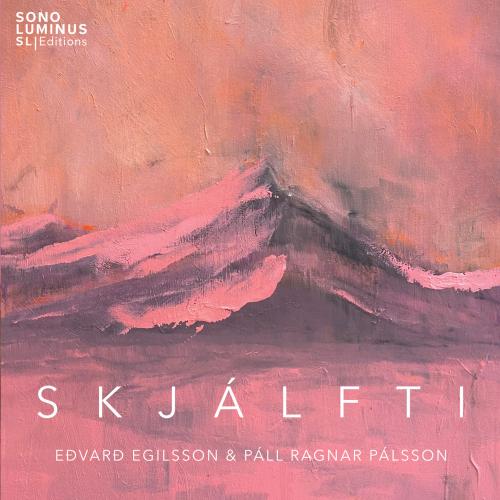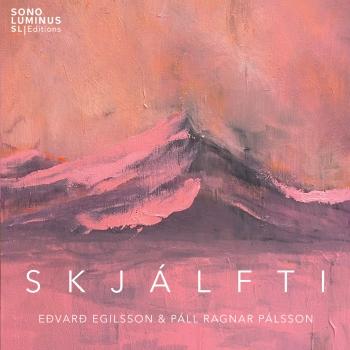
Album info
Album-Release:
2023
HRA-Release:
16.11.2023
Label: Sono Luminus
Genre: Classical
Subgenre: Classical Crossover
Artist: Eðvarð Egilsson & Páll Ragnar Pálsson
Composer: Eovaro Egilsson, Pall Ragnar Palsson
Album including Album cover Booklet (PDF)
- 1 Pálsson, Egilsson: Hallgrímskirkja 03:22
- 2 Pálsson, Egilsson: Flog I 02:04
- 3 Pálsson, Egilsson: Saga 03:06
- 4 Pálsson, Egilsson: Safavél 04:48
- 5 Pálsson, Egilsson: Hvalfjörður 02:22
- 6 Pálsson, Egilsson: Gleyma 04:47
- 7 Pálsson, Egilsson: Miklabraut 05:18
- 8 Pálsson, Egilsson: Furulækur 03:19
- 9 Pálsson, Egilsson: Flog II 03:07
- 10 Pálsson, Egilsson: Katrín 01:34
- 11 Pálsson, Egilsson: Systur 03:03
- 12 Pálsson, Egilsson: Leigubíll 04:00
- 13 Pálsson, Egilsson: Langahlíð 01:07
- 14 Pálsson, Egilsson: Ívar 02:03
- 15 Pálsson, Egilsson: Klambratún 04:44
Info for Skjálfti
When two Icelandic composers Páll Ragnar Pálsson and Eðvarð Egilsson finished scoring Quake, a psychological family drama, they were not ready to stop just there. What followed was a voyage of musical discoveries as they allowed for new ideas to enter the creative space. Just as a plant spread itself over the whole garden, cues from the movie scenes become independent, mature songs. The soundscape dwells on the border of acoustic and electronic and drifts from song-based to textural, from atmospheric to cinematic with lustrous cello in the foreground.
Skjálfti is a family drama, and we can hear the fissures in the music. When the sides are at war, genres shift; when they compromise and reconcile, a deep peace descends. The composers are reflecting the nature of daily life when subjected to forces that threaten to unravel it: in essence, a quake. But there’s also great love, as reflected in the tender “Gleyma” (“Forget”). The sonic peak arrives at the end of “Miklabraut,” as the guitars surge, the drums pound, and one can imagine a monsterous emotional blowout, followed by a shocked aftermath, painted in ivory notes. The volume takes a while to recover, as if too much has been said and the room needs to reassess.
Freed from the constraints of cinema, the composers are allowed to write their own ending. The sedate “Systur” (“Sisters”) is like a reconciliation, although the tone soon turns sadder. Electronic beats offer a modicum of movement, a hint of hope, bursting into bloom in the finale. In a movie, “Klambratún” would normally be playing over the credits, but here it is the end of the story, and what a glorious ending it turns out to be. All the instruments come out to play, genres intertwine, and we imagine a family standing strong and true, having survived the storm. (Richard Allen)
No biography found.
Booklet for Skjálfti












